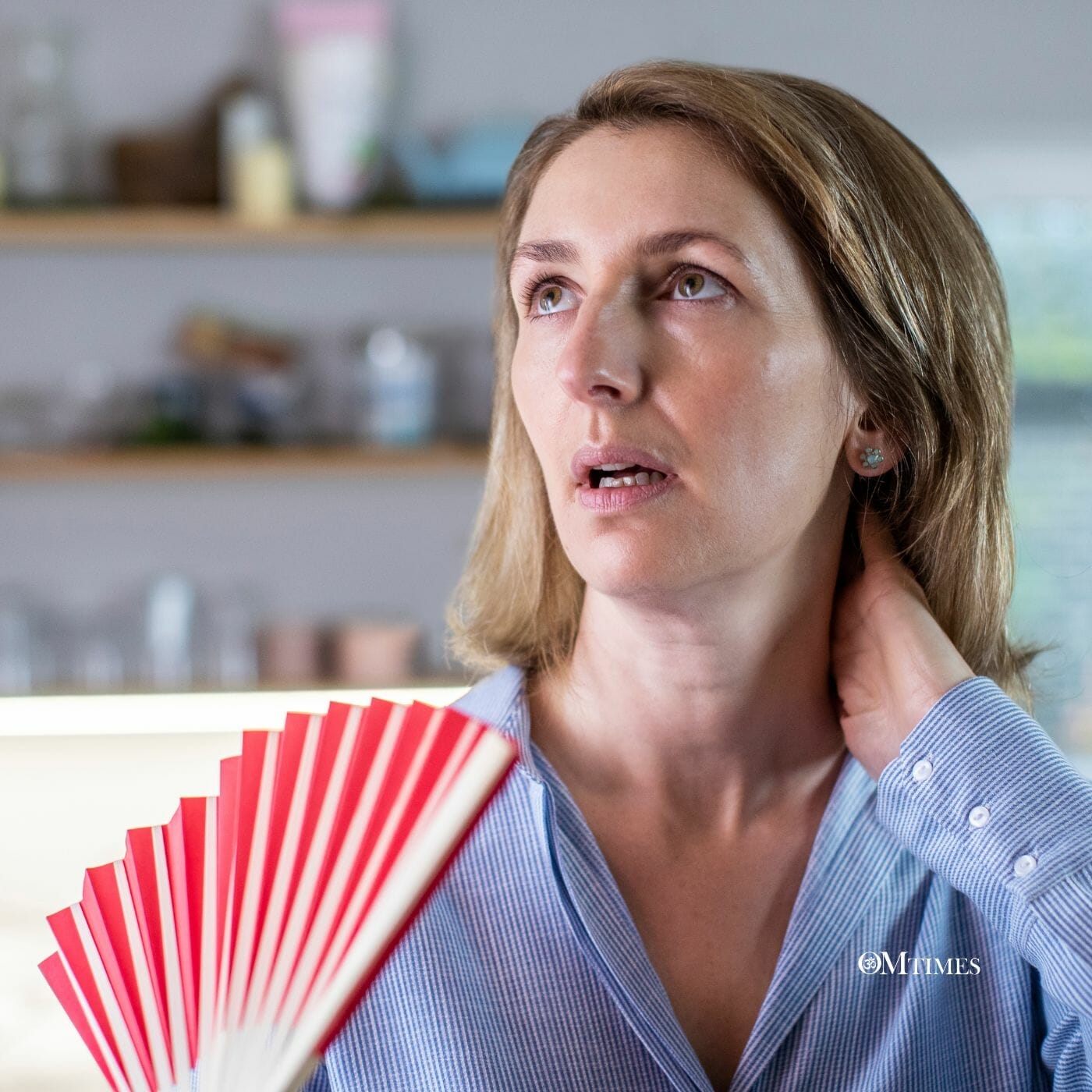Menopause – Dealing with Change

Our lives are filled with transitions. For example, women undergo a major transition cycle every seven years from birth to death. With men, it is every eight years. So looking at our lives in cycles helps us to map out in our minds or better understand our transitions and how to approach them. For women, the seventh cycle in their life is related to menopause. Menopause is the progression and natural change a woman’s body goes through when she reaches the end of her child-bearing cycle. This change signals a decrease in the production of estrogen and progesterone in the ovaries. Often, women are aware that they are nearing menopause once their menstrual periods start changing.
Menopause – The Transition Every Woman Must Make
The cessation of the menstrual cycle for one full year is considered the medical diagnosis of menopause. There is menopause that occurs naturally and menopause that may be induced by surgery. This medical “diagnosis” is not considered a disease but simply an upgrade from reproductive to non-reproductive years. It is simply a name given to this passing phase. This reduction in ovary function, follicles, hormonal changes, and blood circulation does not happen overnight. This process or change often takes place over 3-6 years before a diagnosis of menopause. This is considered perimenopause.
Although the median age for women reaching menopause is age 50 worldwide, remaining unchanged for centuries, variations in this process occur based on constitutional factors and lifestyle. Constitutional factors are considered situations we are born out of based on family traits, genes, and heredity. Lifestyle factors include situations that occur during our lifetime based on choices, such as smoking, chemical dependency, obesity, type 2 diabetes, and dietary choices. Of course, it is never just one factor that is an indicator of this change, but a host of factors accumulating over a lifetime.
The severity of problems or symptoms, which can occur during perimenopause or menopause, is the culmination of several factors brought together over time. For example, for some women, no outward physiological symptoms are experienced. But on the other hand, many women will experience one or several such symptoms as hot flashes, sweating, vaginal dryness, headaches, irritability, insomnia, anxiety, depression, fatigue, or lack of concentration.
The endocrine system is the least understood of the body’s physiological processes. The brain is called the greatest sex organ in the body for a good reason. The master controller of all processes is the pituitary-hypothalamus axis. This is the crossroads of a complex series of feedback interactions and influences within the hypothalamus, the pituitary gland, and the adrenal glands. The ovaries are the main source of estrogen during the reproductive years. This form of estrogen is known as estradiol. During perimenopause, women can begin having less than regular menstruation. Estrogen may be high (dominant) at the beginning of perimenopause, or estrogen may cease to produce. This can often explain why women in their 40’s experience symptoms, and then the symptoms stop. Indicators of perimenopause can manifest as symptoms such as irregular menstrual cycles, with scanty infrequent bleeding, heavy bleeding, and/or clotting or skipped periods. These indicators are the body showing its hormonal imbalances. These symptoms can also be indicators of other disorders; therefore, past history can differentiate.
As a great regulator, the pituitary-hypothalamus axis helps to control hormones. As a woman’s body enters her seventh life cycle, the kidneys (her constitution source of life) and, better yet, the adrenal glands start producing more of the hormone, androstenedione. This hormone starts converting into an estrogen called estrone. Estrone becomes the dominant estrogen instead of estradiol after menopause. The conversion of androstenedione to estrone is most prevalent in women due to the amount of adipose (fat) tissue they may have. Therefore, a woman who is overweight to obese will convert a much larger percentage of androstenedione to estrone (between 5-7%), were a thinner woman may only convert a smaller percentage (between 1-2%). Again, this shows how lifestyle can play a major part in how a woman experiences menopause.
The Holistic Approach To Treating Menopause
The Eastern approach to treating menopause as a holistic therapy is connecting the relationship between the mental, emotional, physical, and spiritual outlook. The Eastern medicine paradigm treats the whole person, as the belief is that nothing works independently but in conjunction with one another. This paradigm also sees symptoms as a differential factor. For example, hot flashes and night sweats are one diagnosis, whereas hot flashes and night sweats with cold hands and feet are completely different. The Eastern approach also looks at lifestyle concerns, environmental issues, diet, nutritional choices, and exercise as a complete effort to treat menopause.
With this said, a holistic approach must have a course of action. To be whole, holistic therapy must address all of the above aspects (mental, emotional, physical, and spiritual). So many women come into my practice to tell me how they have begun dabbling in alternative medicine for their situation. It is wonderful that more and more patients are becoming empowered and willing to take responsibility for their health and health care. I would love to see more of them addressing all aspects of their whole selves.
Managing Lifestyle
Lifestyle factors include situations that occur during our lifetime based on choices, such as smoking, chemical dependency, obesity, type 2 diabetes, and dietary choices. Of course, it is never just one factor that is an indicator of this change, but a host of factors accumulating over a lifetime. Often, the aging process symptoms are confused with symptoms of peri/menopause. In general, symptoms associated with the aging process include weight gain, change in sleep patterns, hearing loss, and a rise in blood pressure and/or cholesterol. These changes are often confused as a direct result of peri/menopause. By changing some lifestyle choices, these symptoms of aging lessen or disappear altogether. Regardless, the solutions can affect both outcomes if symptoms are due to peri/menopause lifestyle/aging problems.
- Not smoking directly correlates to hot flashes, so you can relieve hot flashes by quitting smoking.
- Weight gain increases body fat, affecting hormone levels. By reducing the number of calories per day to 1200, a decrease in weight will occur. Belly fat has been shown to alter hormone levels.
- Exercise, like working, eating, and sleeping… must be scheduled into your day for you to do it! You know when to go to work, you know when to eat, and you must know when to exercise. The best way to do this is to make it a part of your day. Increasing your exercise to 4 days will have additional benefits, such as lowering cholesterol and burning more calories. In addition, weight-bearing exercises (walking, weight training, jogging) help increase bone density. Exercise regulates hot flashes.
- Kegel exercises can and should be done several times daily to keep the pelvic floor tight and strong. These are wonderful exercises for bladder control due to the shrinkage of urethral and vaginal membranes, which can cause incontinence. First, start squeezing the anal sphincter and lower pelvic wall right where you are now. Squeeze, hold, relax. Repeat this ten times. Then repeat the entire sequence again. Do this 4-6 times a day.
- Learn biofeedback. Biofeedback is the innate ability to influence the automatic nervous system through the exertion of will and mind. Chances are you have used biofeedback yourself. If you have ever taken your temperature or stepped on a scale, you’ve used it. These devices “feedback” information about your body’s condition. Studies have proven it effective for both tension headaches and migraines. In addition, biofeedback “devices” can control our heart rate and blood pressure. This is very important for managing peri/menopause.
- Vaginal dryness can often be an issue as hormone levels fluctuate. Vaginal lubricants can be helpful. Staying sexually active will increase blood flow to surrounding tissue. A wonderful natural lubricant is a paste made of aloe vera gel and slippery elm powder. Use a tablespoon of pure aloe vera gel and slowly stir in the slippery elm powder to create a consistency of toothpaste. Insert a teaspoon of this paste inside the vagina at night to relieve dryness. Vaginal itching can be addressed by applying a non-fragrant vitamin E cream or by opening up a vitamin E capsule and applying the oil directly.
- Treating A Hot Flash is probably the number one issue with the change from reproductive to non-reproductive years. Nutritional recommendations must be followed. Getting long-term stress issues under control is extremely important. Regulating the body’s cooling mechanism through regular exercise is imperative.
- Stress plays a major role in all biological and physiological functions. Exercise, meditation, yoga, relaxation techniques, massage, acupuncture, and guided imagery are just a few therapies that can all help to relieve depression, anxiety, irritability, mental forgetfulness, fuzziness, overthinking, and fatigue. Stress puts a great deal of burden on the adrenal glands, which, in turn, causes them to work harder. This decreases the number of hormones needed to help reduce the effects of declining estrogen needed by the body. Consider a progressive relaxation exercise that focuses on relaxing one part of the body at a time, from the top of the head to the toes. Use your hands for both self-massage and
- Trigger point therapy is probably one of my best remedies for tension and can be done with a tennis ball while lying on a hard floor. Place the ball under “hot spots” or sore tension areas. Allow the weight of your body to relax over the tennis ball. Slowly move the portion of the body on top of the tennis ball to massage and “activate” the trigger points until they are less sore and painful.
- Eat something. Food as medicine has been used for centuries to treat various disorders. Used for prevention as well as treating symptoms, the healing power of food and herbs has been documented for centuries. Eating food rich in plant estrogens (phytoestrogens) can be helpful for many women. For example, a plant-based diet rich in phytoestrogens has decreased symptoms of hot flashes and night sweats. Phytoestrogens are naturally occurring non-steroidal plants. These include black currant seed oil, dates, flaxseed (crushed), pomegranates, primrose oil, miso, soy milk, soybeans, tempeh, and tofu.
There is never a one-size-fits-all plan for treating a woman’s change in life. It is important to embrace the transition as each day introduces new challenges. Learn to recognize strengths you may have overlooked. The mental and emotional side of menopause is often a larger hurdle to overcome, as our attitudes and beliefs create our mind/body structure along the journey.
You will also enjoy Andrew Pacholyk: Spiritual Journey through Life’s Seasons
Click HERE to Connect with your Daily Horoscope on OMTimes!
Visit Our Astrology Store for Personalized Reports
About the Author
Andrew Pacholyk MS L.Ac is the author of “Lead Us To A Place ~ your spiritual journey through life’s seasons.” He has been in the health industry for over 20 years. He is an expert in treating infertility, muscular-skeletal pain, and related aging issues with acupuncture and herbal medicine. Andrew is an educator. He has taught over 100,000 students in his accredited certification courses in the alternative, complementary, and metaphysical healing. You can access his life’s work and teachings https://peacefulmind.com
OMTimes is the first and only Spiritually Conscious Magazine. Follow Us On Facebook, Twitter, Instagram, Linkedin, Pinterest, and Youtube
Andrew Pacholyk, MS, L.Ac. has been in the alternative health field for over 18 years. He is an expert in treating infertility and gynecology, pain management and anti-aging therapies. His knowledge, expertise and clinical training has offered him the ability to experience and continually learn about the body and its energy system in health as well as in disease.







